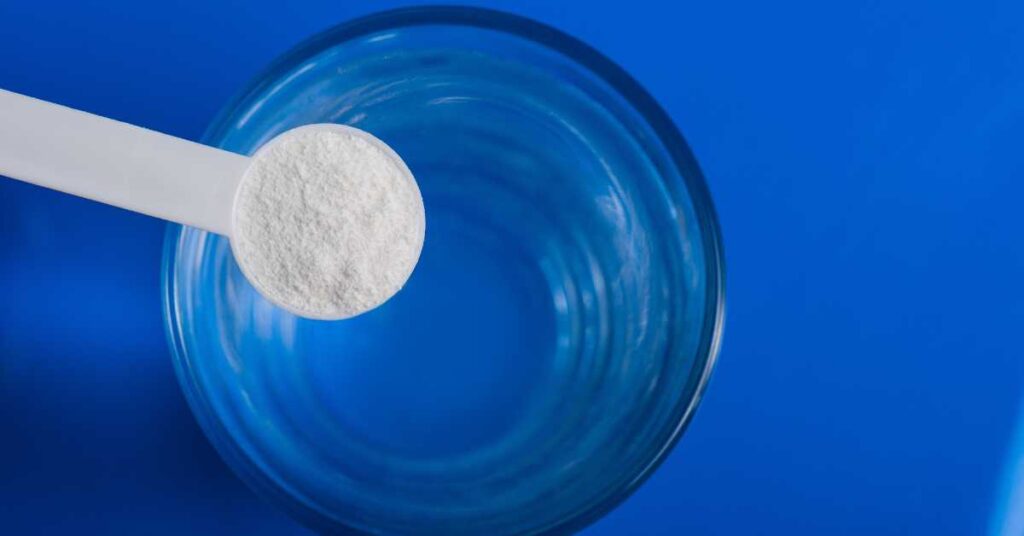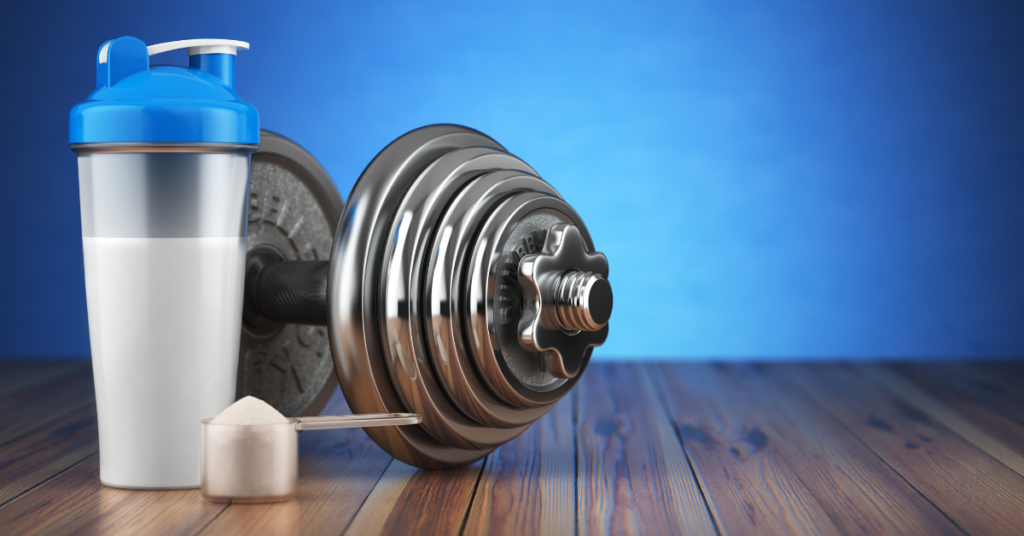Introduction
As an athlete, you already know the importance of proper hydration. Staying hydrated is not just about quenching your thirst, but it plays a crucial role in your overall performance and well-being.
In this article, we will delve into the fundamentals of hydration and provide you with essential tips and guidelines to optimize your hydration strategy. So grab a glass of water and let’s dive in!
The Significance of Hydration
Understanding the Role of Water in the Body
Water is the essence of life, and its importance cannot be overstated. Our bodies are made up of approximately 60% water, and every cell, tissue, and organ relies on it to function optimally.
Water serves various crucial purposes in the body, including regulating body temperature, lubricating joints, transporting nutrients, and eliminating waste products. Without proper hydration, these essential functions are compromised, leading to a decline in athletic performance.
The Impact of Dehydration on Athletic Performance
Dehydration can have a profound negative impact on your athletic performance. Even mild dehydration, as little as 2% of body weight loss, can impair your physical and mental abilities.
It affects your cardiovascular system, reducing blood volume and increasing heart rate, which can lead to fatigue and reduced endurance. Dehydration also impairs thermoregulation, making you more susceptible to heat-related illnesses. In short, inadequate hydration hampers your ability to perform at your best.
Hydration Guidelines
Determining Your Personal Hydration Needs
Everyone’s hydration needs are unique, depending on factors such as body weight, activity level, climate, and sweat rate. A general guideline is to consume at least 8 cups (64 ounces) of water per day, but athletes may require more. Monitoring your body weight before and after exercise can help estimate fluid losses. For every pound lost during a workout, aim to drink 16 to 24 ounces of fluid to rehydrate adequately.
Pre-Workout Hydration Strategies
Proper hydration should begin before your workout or competition. Aim to drink 16 to 20 ounces of water or a sports drink 2 to 3 hours before exercise. This allows your body to absorb and distribute the fluid adequately. In the final 10 to 20 minutes before starting, consume an additional 8 ounces of fluid to top off your hydration levels.
During-Workout Hydration Strategies
During exercise, it’s crucial to replenish fluids regularly to maintain optimal hydration. The American College of Sports Medicine (ACSM) recommends drinking 7 to 10 ounces of fluid every 10 to 20 minutes during exercise.
For longer workouts exceeding 60 minutes, consider consuming a sports drink containing carbohydrates and electrolytes to sustain energy levels and replace electrolyte losses through sweat.
Post-Workout Hydration Strategies
Rehydrating after exercise is essential to replenish fluid losses. Aim to drink 24 ounces of fluid for every pound lost during exercise within the first 2 hours of completing your workout. Water is generally sufficient for shorter workouts, but for intense or prolonged activities, a sports drink may be beneficial to replace electrolytes and aid in recovery.
Electrolytes: The Key to Balanced Hydration
What Are Electrolytes and Why Do They Matter?
Electrolytes are minerals that carry an electric charge and play a crucial role in maintaining fluid balance, transmitting nerve signals, and supporting muscle function. The main electrolytes in the body include sodium, potassium, magnesium, and calcium.
During exercise, electrolytes are lost through sweat, and their imbalance can lead to cramping, fatigue, and impaired performance. Ensuring an adequate intake of electrolytes is vital for maintaining hydration and supporting optimal athletic performance.
Electrolyte Imbalance and Its Effects
An imbalance in electrolyte levels can disrupt the delicate equilibrium necessary for optimal bodily functions. Hyponatremia, characterized by low sodium levels, can occur if excessive water intake dilutes sodium concentration in the blood.
On the other hand, dehydration can lead to hypernatremia, an excessive concentration of sodium due to fluid loss. Both conditions can have severe consequences, highlighting the importance of maintaining electrolyte balance through proper hydration strategies.
Natural Sources of Electrolytes
While sports drinks and electrolyte supplements are popular choices for replenishing electrolytes, many natural foods can also provide these essential minerals.
Foods such as bananas, oranges, avocados, spinach, and yogurt are rich in potassium, while sodium can be obtained from foods like pickles, olives, and broth. Including a variety of electrolyte-rich foods in your diet can complement your hydration efforts and promote overall health.
Hydration Techniques for Endurance Athletes
Hydration for Runners
As a runner, staying properly hydrated is essential for performance and endurance. Begin your runs well-hydrated, and consider carrying a water bottle or planning your route near water fountains.
For longer runs, electrolyte replacement through sports drinks or gels can help sustain energy levels and maintain electrolyte balance. Experiment during training to determine your individual hydration needs and find a strategy that works best for you.
Hydration for Cyclists
Cycling, especially in hot weather or during long rides, demands special attention to hydration. Ensure you have enough water bottles on your bike to meet your fluid needs, and plan routes that pass by convenience stores or water sources for refills.
Consider using a hydration pack or installing a hydration system on your bike for easy access to fluids during longer rides. Monitoring your hydration levels and adjusting your intake accordingly is crucial to perform at your peak.
Hydration for Triathletes
Triathletes face the challenge of balancing hydration needs across multiple disciplines. Adequate fluid intake during the swim, cycling, and running portions of the race is vital.
Practice transitioning from one sport to another while hydrating effectively to simulate race conditions. Plan your hydration strategy carefully and consider consulting with a sports nutritionist or coach to optimize your performance in each leg of the race.
Hydration Myths Debunked
Clearing Up Common Misconceptions
There are several myths surrounding hydration that can lead to confusion. Let’s debunk a few of them:
Myth 1: You Should Drink as Much Water as Possible
While hydration is crucial, excessive water intake can lead to hyponatremia, a dangerous condition of low sodium levels. It’s important to drink enough fluids to maintain hydration but avoid overhydration.
Myth 2: Thirst Is a Reliable Indicator of Hydration
Thirst is not always an accurate indicator of your hydration status. By the time you feel thirsty, you may already be slightly dehydrated. Don’t rely solely on thirst cues; instead, establish a regular hydration routine.
Myth 3: Coffee Dehydrates You
Contrary to popular belief, moderate consumption of caffeinated beverages like coffee does not lead to dehydration. While caffeine has a diuretic effect, the fluid content in coffee compensates for this, making it hydrating in moderate amounts.
Optimizing Hydration in Different Environments
Hydration in Hot and Humid Conditions
Exercising in hot and humid environments poses additional challenges to staying hydrated. The combination of increased sweat rates and accelerated fluid loss through evaporation makes adequate hydration crucial. To optimize hydration in these conditions, start your exercise well-hydrated, wear breathable clothing, and consider using electrolyte-rich sports drinks to replace both fluid and electrolyte losses.
Hydration in Cold Weather
Although you may not feel as thirsty in cold weather, proper hydration remains important. Cold weather can increase fluid losses through respiratory water loss and sweat, and the body’s thirst response may be blunted. Make a conscious effort to drink fluids regularly during cold-weather activities, even if you don’t feel as thirsty as you would in warmer conditions.
Altitude and Its Impact on Hydration
At higher altitudes, the air is drier, and increased respiratory water loss can lead to dehydration. Additionally, altitude can suppress your appetite, making it easier to neglect hydration. Be mindful of your fluid intake when exercising or spending time at high altitudes, and ensure you have access to clean drinking water to maintain optimal hydration levels.
Hydration and Sports Drinks
Understanding Sports Drinks
Sports drinks are beverages formulated to replenish fluids, carbohydrates, and electrolytes during and after exercise. They typically contain a combination of water, sugars, electrolytes, and sometimes vitamins or amino acids. Sports drinks can be beneficial for athletes engaging in intense or prolonged activities lasting over an hour, as they provide a readily available source of energy and aid in electrolyte balance.
Choosing the Right Sports Drink for Your Needs
With a multitude of sports drinks available, selecting the right one can be overwhelming. Consider factors such as the duration and intensity of your activity, personal taste preferences, and any specific dietary needs or restrictions you may have. Look for sports drinks that contain a balance of carbohydrates and electrolytes, and avoid those with excessive added sugars or artificial ingredients.
Homemade Electrolyte Drink Recipes
If you prefer to avoid commercial sports drinks or want to experiment with homemade alternatives, you can easily create your own electrolyte-rich beverages. Here’s a simple recipe to try:
Homemade Electrolyte Drink Recipe
Ingredients:
- 2 cups of water
- 1/2 cup of freshly squeezed orange juice
- 1/4 cup of freshly squeezed lemon juice
- 2 tablespoons of honey or maple syrup
- 1/4 teaspoon of salt
Instructions:
- Mix all the ingredients together in a pitcher until well combined.
- Chill in the refrigerator or add ice cubes for a refreshing drink.
- Consume during or after exercise to replenish fluids and electrolytes.
Monitoring Hydration Levels
Recognizing the Signs of Dehydration
It’s essential to be aware of the signs and symptoms of dehydration to take appropriate action promptly. Common indicators of dehydration include increased thirst, dry mouth, dark urine, fatigue, dizziness, and muscle cramps. Pay attention to these signals and adjust your fluid intake accordingly to prevent further dehydration.
Techniques for Monitoring Fluid Intake and Output
Monitoring your fluid intake and output can provide valuable insights into your hydration status. Keep track of the volume of fluids you consume and compare it to your urine output. Ideally, your urine should be a pale yellow color.
If it appears dark and concentrated, it may be a sign of inadequate hydration. Monitoring changes in body weight before and after exercise can also help estimate fluid losses and guide your rehydration efforts.
Hydration and Recovery
The Role of Hydration in the Recovery Process
Proper hydration plays a significant role in the recovery phase after exercise. Replenishing fluids lost during a workout helps restore fluid balance and supports various physiological processes involved in recovery, such as nutrient transport and waste removal. Adequate hydration aids in muscle repair, reduces the risk of muscle cramps, and promotes overall recovery efficiency.
Hydration Strategies for Efficient Recovery
To optimize your recovery, prioritize hydration alongside other post-workout practices. Consume fluids containing both water and electrolytes within the first 2 hours after exercise. Incorporate nutrient-rich foods and consider adding protein to aid in muscle repair. A balanced recovery meal or snack, combined with adequate hydration, will set the stage for efficient recovery and help you prepare for your next training session.
Conclusion
Proper hydration is a fundamental aspect of athletic performance and overall well-being. Understanding the significance of hydration, following specific guidelines, and considering individual needs and environmental factors will help you optimize your hydration strategy.
Remember to monitor your hydration levels, replenish fluids regularly, and pay attention to electrolyte balance. By staying properly hydrated, you’ll enhance your athletic performance, reduce the risk of dehydration-related complications, and maximize your potential as an athlete.
Frequently Asked Questions (FAQs)
Q1: How much water should I drink during exercise?
A1: The American College of Sports Medicine (ACSM) recommends drinking 7 to 10 ounces of fluid every 10 to 20 minutes during exercise. However, individual hydration needs may vary based on factors such as body weight, activity intensity, and environmental conditions.
Q2: Can I drink too much water during exercise?
A2: While it’s essential to stay hydrated, excessive water intake can lead to hyponatremia, a condition characterized by low sodium levels in the blood. It’s crucial to balance fluid intake with electrolyte replenishment to avoid overhydration.
Q3: Are sports drinks necessary for hydration?
A3: Sports drinks can be beneficial for athletes engaged in prolonged or intense exercise lasting over an hour. They provide a source of carbohydrates and electrolytes to sustain energy levels and aid in hydration. However, for shorter workouts, water is generally sufficient for hydration.
Q4: How can I tell if I’m adequately hydrated?
A4: Monitoring your urine color is a simple way to assess hydration status. Pale yellow urine indicates adequate hydration, while dark urine may indicate dehydration. Additionally, paying attention to thirst cues and monitoring your body weight before and after exercise can provide further insights into your hydration needs.
Q5: Can I rely on thirst to guide my hydration?
A5: Thirst is not always an accurate indicator of hydration status. By the time you feel thirsty, you may already be slightly dehydrated. Establishing a regular hydration routine and consuming fluids at regular intervals, even when not feeling thirsty, is crucial to maintain optimal hydration levels.
Disclaimer: When it comes to sport nutrition, always seek professional guidance and advice from medical professionals, nutritionists and other relevant professionals who will be in a position to better address specific concerns or issues related to your individual situation. In no event shall we be liable for any direct, indirect, incidental, special, or consequential damages arising out of or in connection with your use of this website or the content provided herein.







